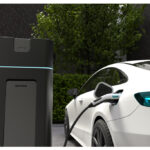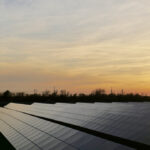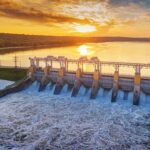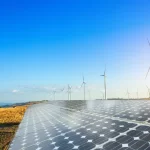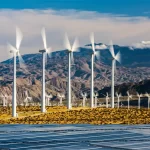How Wind Speed Affects Solar Power Generation
When we think about solar energy, we often imagine sunshine beaming down on shiny solar panels, quietly powering our homes, offices, or entire cities. But there’s something else in the environment that plays a surprising role in how these panels perform—wind. While solar panels are designed to capture sunlight, wind also affects how well they work, how long they last, and how efficiently they generate power. So, how exactly does wind speed influence solar power generation? That’s what we’ll explore in this post.

Solar panels are built to endure various weather conditions. They face heat, cold, snow, and rain throughout the year. However, wind brings in a unique factor. It not only affects the temperature of the panels, which can influence energy efficiency, but it also puts pressure on their structure. This dual role makes the effect of wind on solar panels a topic worth understanding, especially for anyone considering a solar installation at home, on a farm, or for a business.
At first glance, it might seem like wind would only be a threat to solar panels—after all, strong winds can cause damage to rooftops, trees, and even buildings. But the relationship between wind and solar performance is more nuanced than that. In some ways, wind actually helps. For instance, high temperatures can reduce a panel’s energy output. In such cases, a cool breeze or steady airflow can lower the panel’s surface temperature and slightly improve performance. So in certain conditions, wind can boost how much energy the system produces.
However, this benefit comes with risks. As wind moves across solar panels, it creates a force known as wind load on solar panels. This force acts on the surface of the panel and tries to push or lift it. If the panels are not installed correctly or if the mounting system isn’t strong enough, the panels can shake, shift, or even detach. That’s why the solar panel durability and the quality of the support system matter so much. They determine how well the system will handle different wind speeds over the years.
Furthermore, regions that experience frequent storms or strong gusts must pay even closer attention. Engineers need to calculate wind speeds during the design process to ensure the system stays stable. For example, solar arrays in coastal areas often face much stronger winds than those in inland locations. In such cases, heavier mounting systems and tighter anchoring become necessary to avoid damage and power disruption.
As we dig deeper into this topic, we’ll cover several key areas. We’ll look at how wind cools solar panels and affects their efficiency, and what kind of wind speeds can be beneficial versus harmful. We’ll also explore how manufacturers test for solar panel durability and what standards are in place to ensure systems can handle wind safely. Finally, we’ll share real-life examples and expert advice on how to maintain solar systems in windy environments.
By the end of this post, you’ll have a clearer understanding of how wind plays both a friend and a foe in solar energy production. With this knowledge, you’ll be better prepared to choose the right type of solar setup for your region and ensure you get the most from your investment.
Frequently Asked Questions (FAQs)
Yes, strong winds can damage solar panels if they are not properly installed or reinforced. High wind speeds can loosen mounting structures, cause panels to detach, or lead to structural stress. Ensuring secure mounting and wind-resistant designs can help mitigate these risks.
Yes, wind can enhance solar performance by cooling the panels and preventing excessive heat buildup, which can improve their energy conversion efficiency.
Most solar panels are designed to withstand wind speeds of up to 140 mph (225 km/h), depending on their mounting system and structural design. It is important to check the manufacturer’s specifications and local weather conditions when installing a solar system.
To protect solar panels from wind damage, ensure they are securely mounted using wind-resistant brackets, install wind barriers if necessary, and perform regular maintenance checks to detect any loose components.
Yes, solar energy and wind energy often complement each other. Wind speeds tend to be higher at night or during cloudy conditions when solar production is lower. Hybrid renewable energy systems combining both sources can ensure more stable energy generation.





